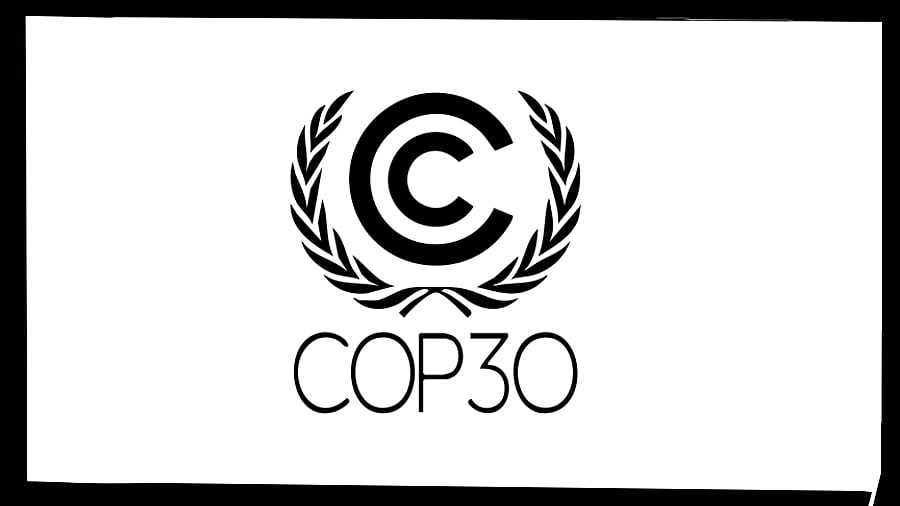
RISHU GARG AND AMMU SUSANNA JACOB
The discussions at COP30 in Belem, Brazil, have called for action on a just transition towards a low-carbon economy, underscoring that climate action and social equity cannot be separated. For India, the stakes are especially high. India surpassed 256 gigawatt (GW) of non-fossil capacity on September 30 2025 – a significant milestone in its net-zero journey. While this is commendable, it is important to ensure that the process is fair and inclusive from all aspects.
What is ‘just transition’? The discussion of a just transition began in the late 1970s and early 1980s, as global awareness of environmental issues grew. In 1993, American labour leader Tony Mazzocchi proposed a ‘Superfund for Workers’ to support those leaving hazardous jobs. Trade unions later expanded the concept to ensure that workers are not disproportionately affected (in terms of livelihoods and health) while moving from high-carbon to low-carbon economies. International bodies such as the International Labour Organisation and the United Nations now frame just transition as a process that delivers environmental sustainability alongside equity.
However, in India, NITI Aayog has emphasised just transition primarily in the context of coal, ensuring that mine closures and workforce shifts are managed in a just, timely, and accountable way. This framing is important but partial. Countries such as Indonesia define just transition as ‘An energy transition in which the conditions resulting in social, economic, and environmental risks and opportunities are equitably distributed among stakeholders according to their capacity and conditions. A just transition also affirmatively enables vulnerable, underserved stakeholders to participate in decision-making that mitigates the risks and captures benefits from opportunities’. India, too, would benefit from such a broader framing.
Although just transition has become almost synonymous with coal in India, it needs to be considered in the context of the expanding renewable energy sector. Solar parks, wind farms, and associated transmission lines require significant tracts of land, which may affect local livelihoods and ecosystems. For example, in Rajasthan, overhead transmission infrastructure across desert landscapes has contributed to the decline of the Great Indian Bustard, a critically endangered species.
Another emerging challenge is solar waste. As India’s earliest installations approach end-of-life (20-25 years), states such as Rajasthan, Gujarat, Karnataka, Andhra Pradesh, and Tamil Nadu – home to large solar parks – will face rising volumes of panel waste. In the absence of clear recycling pathways, toxic materials from this waste can leach into the environment, compounding the pressures on the very communities that parted with land for renewable projects.
To ensure justice in the transition, there is a need for a universal framework that applies to all technologies and is based on shared benefits, transparent decision-making, and the repair of any harm. One such framework – proposed by McCauley and Heffron in 2018 – has three pillars: distributional justice (ensures that costs and benefits are shared fairly), procedural justice (makes decision-making transparent and inclusive), and restorative justice (includes restoring shared community resources, investing in health and education, and safeguarding ecosystems).
To avoid repeating the inequities of the fossil fuel era, India should embed a framework of justice into its institutional architecture. Clear indicators, for example, local jobs and benefit-sharing (distributional), community participation and transparent approvals (procedural), and social and ecological investments (restorative), can be applied across all renewable technologies. Also, integrating this justice framework into policy design would ensure that projects are assessed not only on energy delivered but also on fairness and inclusiveness.
Protecting ecosystems and livelihoods
To ensure smooth integration, India will also need a coordinated set of measures. First, the government could establish an inter-ministerial platform, focusing on creating specific task forces aligned to renewable technologies for skill development, livelihoods, gender inclusion, and community engagement. This platform could be anchored by the National Skill Development Corporation alongside the Ministry of Power, Ministry of New and Renewable Energy, Ministry of Environment, Forests and Climate Change, Ministry of Rural Development, Ministry of Tribal Affairs, and Ministry of Women and Child Development.
Spatial planning must also be strengthened through GIS mapping of renewable parks, transmission lines, roads and related infrastructure, safeguarding grazing lands and biodiversity hotspots.
At the project level, free, prior, and informed consent (FPIC) should be operationalised for all affected communities through independent facilitation and transparent disclosure. Additionally, renewable energy developers should earmark a portion of revenues for local development and ecological restoration through community-led committees.
A circular economy approach is also critical. Enforcing Extended Producer Responsibility (EPR) for solar manufacturers, supporting recycling infrastructure, and embedding circularity requirements into tenders will help India manage the end-of-life risks of large-scale renewables. Finally, while much of India’s just transition discussions have been framed at the national level, states are the true frontlines of the energy transition. Therefore, the framework should be state-driven for effective implementation.
As India accelerates into a renewable-dominated future, just transition discussions must move beyond coal and ensure that the clean energy projects do not displace vulnerable communities, undermine local livelihoods, or irreversibly damage ecosystems. Further, with COP30 pushing for an action-oriented just transition work programme globally, it is crucial that this programme covers both fossil- and renewable-based technologies and embeds the principles of distributive, procedural, and restorative justice.
(Rishu is a senior policy specialist, and Ammu is a research scientist in the energy and power sector at the Centre for Study of Science, Technology and Policy [CSTEP], a research-based think tank)
Disclaimer: The views expressed above are the author's own. They do not necessarily reflect the views of DH.